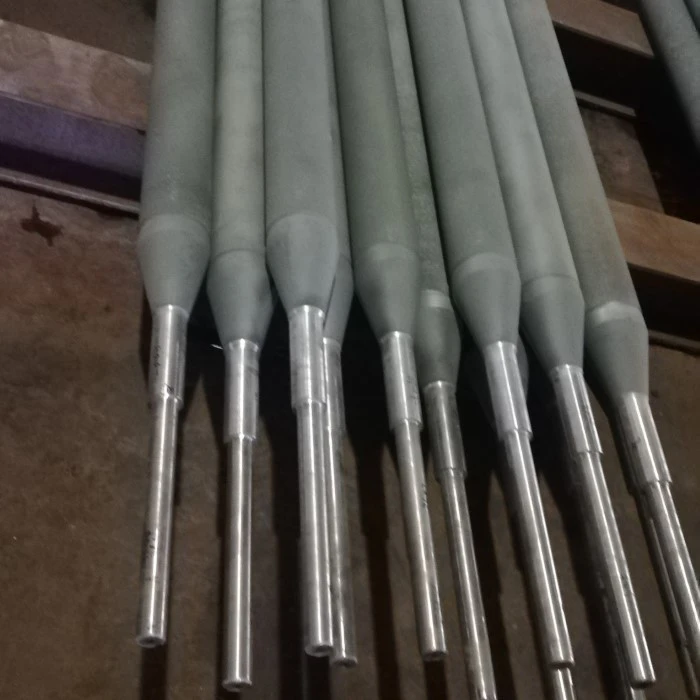Key Features of Insulated Furnace Rolls
Advanced Insulation Materials
Insulated furnace rolls are constructed using a variety of advanced insulation materials designed to offer superior thermal resistance, essential for maintaining the temperature stability within high-temperature furnace environments. These materials are integral to minimizing the heat transfer from the furnace roll's core to its surface, ensuring that heat is kept where it is needed and reducing energy loss. By using these cutting-edge materials, manufacturers can enhance furnace efficiency, reduce operating costs, and prolong the lifespan of the rolls.
Ceramic fibers are one of the most commonly used insulation materials for furnace rolls. These fibers are lightweight yet highly effective at preventing heat loss due to their low thermal conductivity. Ceramic fibers are typically used in the form of blankets, boards, or modules that are wrapped around the roll core or used to line the interior of the roll. These fibers can withstand extremely high temperatures, often exceeding 1,200°C (2,192°F), and have excellent resistance to thermal shock, making them ideal for applications in high-temperature furnaces. The flexibility of ceramic fibers also allows for easy customization to the specific geometry of the furnace rolls, providing an effective thermal barrier with minimal weight.
Thermal Barrier Coatings
Thermal barrier coatings (TBCs) are an essential component of insulated furnace rolls, playing a key role in enhancing their insulation performance. These specialized coatings are designed to form a protective layer on the roll's surface that further reduces heat transfer, ensuring that the core remains at a stable temperature and preventing excessive heat loss. TBCs also offer added protection against oxidation, corrosion, and thermal degradation, extending the lifespan of the furnace rolls and improving their overall performance.
Typically, TBCs are made from advanced ceramic materials, such as zirconia or yttria-stabilized zirconia (YSZ), which have exceptional thermal resistance. These materials are applied as thin coatings on the surface of the furnace roll using techniques like plasma spraying, electron-beam deposition, or thermal spraying. The coatings act as a heat shield, reflecting and diffusing the heat that would otherwise be transferred to the roll’s surface, thus protecting the core material from thermal damage.
Optimized Roll Design
The design of insulated furnace rolls is carefully optimized to maximize their thermal performance. This includes considerations such as roll diameter, wall thickness, and internal structure. By carefully balancing these factors, manufacturers can create furnace rolls that provide optimal insulation while maintaining the necessary mechanical strength and stability required for various industrial applications.
Benefits of Using Insulated Furnace Rolls
Enhanced Energy Efficiency
One of the primary advantages of using insulated furnace rolls is the significant improvement in energy efficiency. By minimizing heat loss through the rolls, less energy is required to maintain the desired temperature within the furnace. This results in reduced fuel consumption and lower operating costs for industrial heating processes. The improved energy efficiency not only contributes to cost savings but also aligns with sustainability goals by reducing overall energy consumption and carbon emissions.
Improved Temperature Uniformity
Insulated furnace rolls help maintain more uniform temperature distribution throughout the heating chamber. This consistency in temperature leads to better quality control and more predictable results in various industrial processes. For example, in metal heat treatment applications, uniform heating ensures that all parts of the material receive the same thermal exposure, resulting in consistent mechanical properties and reduced defects.
Increased Production Efficiency
The use of insulated furnace rolls can significantly increase production efficiency in various industrial settings. By maintaining stable and uniform temperatures, these rolls enable faster heating cycles and reduced processing times. This improved thermal performance allows for higher throughput and increased productivity without compromising product quality. Additionally, the enhanced temperature control provided by insulated furnace rolls can lead to fewer rejects and rework, further boosting overall production efficiency.
Applications of Insulated Furnace Rolls
Metal Processing Industry
In the metal processing industry, insulated furnace rolls are widely used in various heat treatment processes, including annealing, tempering, and normalizing. These rolls play a crucial role in maintaining precise temperature control during these critical operations, ensuring consistent material properties and quality. The improved energy efficiency and temperature uniformity provided by insulated furnace rolls contribute to cost savings and enhanced product quality in steel mills, aluminum plants, and other metal processing facilities.
Glass Manufacturing
Insulated furnace rolls are essential components in glass manufacturing processes, particularly in float glass production and glass tempering operations. These rolls help maintain the required temperature profile throughout the glass forming and cooling stages, ensuring optimal glass quality and strength. The use of insulated furnace rolls in glass manufacturing contributes to improved energy efficiency, reduced defects, and increased production capacity.
Ceramic Production
In the ceramic industry, insulated furnace rolls are utilized in various stages of production, including drying, firing, and glazing. These rolls help maintain consistent temperatures during the firing process, which is critical for achieving the desired material properties and aesthetic qualities of ceramic products. The improved thermal performance of insulated furnace rolls allows for more precise control over the firing process, resulting in higher-quality ceramic products and reduced energy consumption.
In conclusion, insulated furnace rolls have revolutionized industrial heating processes by significantly improving efficiency and product quality. Their advanced insulation properties, optimized design, and wide range of applications make them indispensable in various industries. As energy efficiency and sustainability continue to be key priorities for manufacturers, the adoption of insulated furnace rolls is likely to increase further. If you're interested in learning more about insulated furnace rolls or other industrial heating solutions, please don't hesitate to contact us at info@welongpost.com.




